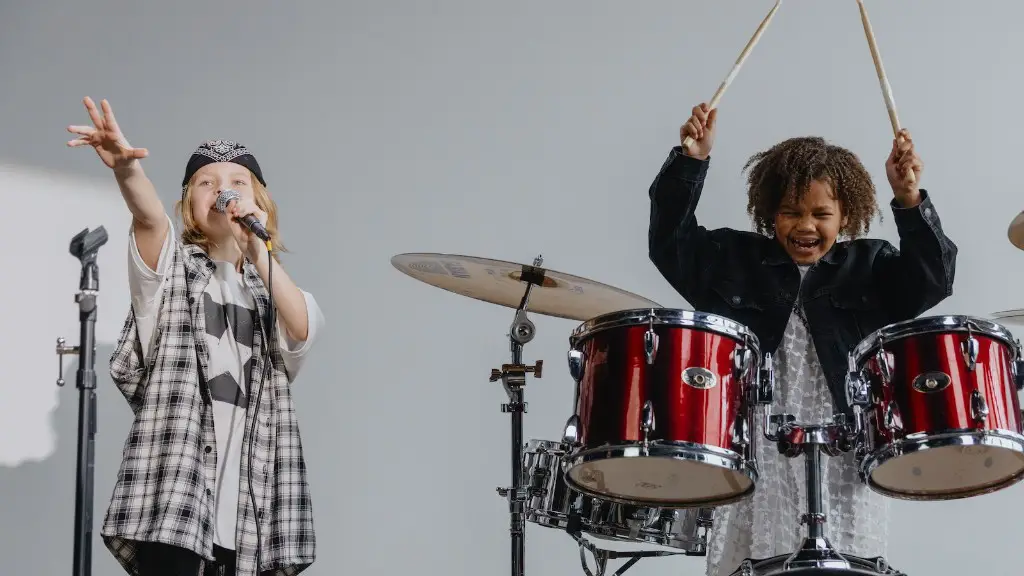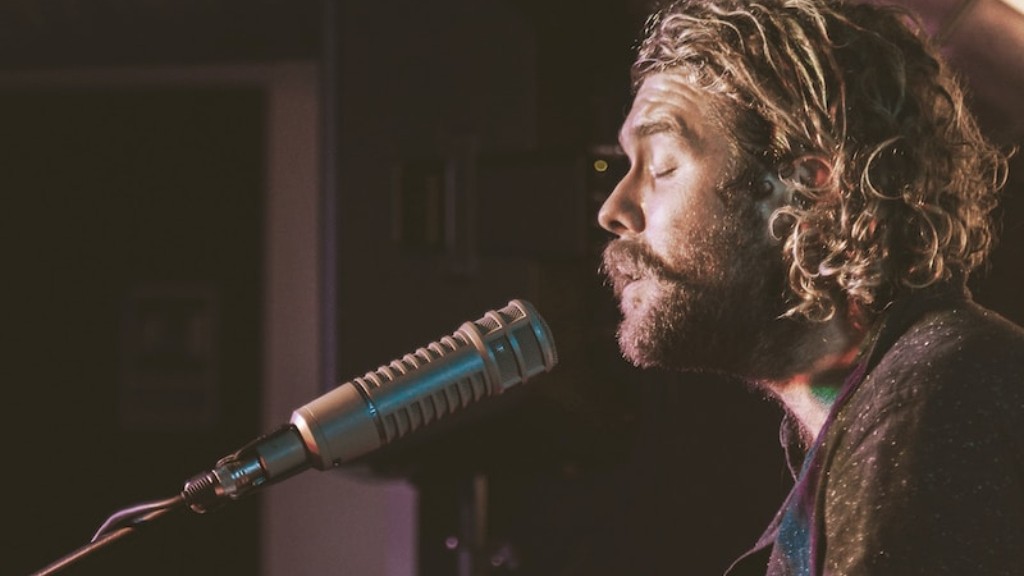Microphones are one of the most important tools for singers. Without a microphone, singers would not be able to project their voices as well and would not be able to perform to the best of their abilities. There are many different types of microphones, but all of them serve the same purpose: to amplify the singer’s voice. In order to sing through a microphone, singers need to understand how to use the microphone properly. The following is a guide on how to sing through a microphone:
When using a microphone to sing, there are a few things to keep in mind. First, it is important to hold the microphone close to your mouth. This will help ensure that your voice is being properly amplified. Secondly, be sure to speak or sing clearly into the microphone to avoid any audio distortion. Finally, try to avoid moving the microphone around too much, as this can also cause distortion.
Is it better to sing with a microphone?
Working with a microphone can help combat the natural inclination to start pushing harder when you’re having a hard time hearing yourself. This is especially true for more advanced vocalists who are accustomed to performing with amplification. When you’re having trouble hearing yourself, it’s easy to start pushing too hard and end up straining your voice. But by working with a microphone, you can learn to control your volume and avoid damaging your vocal cords.
The primary reason singers put their mouths directly on microphones is for an improved signal-to-noise ratio. By keeping the mic at the mouth, the microphone will effectively pick up more of the voice and less of the background instruments/noise, thereby improving vocal intelligibility.
How do you sing in front of a mic
Developing your microphone technique is important if you want to be a good singer. Here are some key tips to keep in mind:
1. Practice your angles. Every microphone has a “sweet spot” where it is most effective. Find the sweet spot for each microphone you use and practice singing into it.
2. Hold the microphone properly. There is a right way and a wrong way to hold a microphone. Learn the proper way to hold a microphone for best results.
3. Proximity effect is your friend! The proximity effect is when you sing closer to a microphone, your voice will sound fuller and richer. Experiment with different distances from the microphone to find the sound you like best.
4. Experiment with different vocal effects. There are many different vocal effects you can create with a microphone. Experiment with different techniques to find the sound you like best.
When you’re trying to sing, it’s important to speak the words first. This will help you get a feel for the rhythm and melody of the song. Once you have a handle on the words, you can start to add in the notes.
What is the 3 to 1 rule when dealing with microphones?
The Three-to-One Rule is a guideline that helps to minimize audible phasing problems when summing several microphones to mono. The rule states that the source-to-microphone distance of numerous microphones should be three times the distance between the sound source and the nearest microphone. This allows the sound waves from the various microphones to reach the summing point (usually a mixing console) at different times, which helps to avoid phase cancellation.
This is because the sound is more natural when it is not coming directly from the mouth. When the microphone is too close to the mouth, it can pick up on the sound of the person’s breath, which can be distracting.
Do singers cringe at their own voice?
Yes, it is normal for a singer to dislike the sound of their own voice when they hear it on a recording. Most people don’t like the sound of their voice when they hear it recorded and you are definitely not alone if hearing your own voice makes you cringe.
In-ears are a great way to block out the sound of amplified instruments and acoustic instruments like drums. This allows you to have the mix at a lower level and protect your ears.
Do singers hear their own voice
It is interesting to note that singers not only hear themselves sing, but they are constantly assessing the sounds they make during singing in order to bring those phonations into accord with the tonal ideal to which they have given their allegiance. This suggest that singers are very much in tune with the sounds they produce and are constantly striving to produce the best possible sound.
there are a few reasons why singers might pull the mic away from their mouth when they hit a high note. one reason is that it can help to prevent the signal from breaking up, as sound pressure will decrease the further away the source is – which means less distortion. another reason might be that the singer wants to control the dynamics of their performance and make the high note stand out more. either way, it’s a common technique that can be used to great effect!
Why do singers tap their microphones while singing?
Direct mouth-to-mic contact is done by singers to increase the volume of their voice, as well as amplify low notes (this is called the proximity effect). This is useful when there’s a lot of other onstage interference from loud instruments, other singers or even monitors. By touching the mic with their lips, singers can ensure that their voice is heard above the rest of the noise.
When singing into a microphone, be sure to sing into the center of it to get the best sound. Be aware of the proximity effect, which is when the sound of your voice gets more bass-heavy the closer you are to the microphone. To combat this, try using a windscreen or pop filter. Hold the microphone correctly (usually by the bottom) and if necessary, leave it on the stand. Following these tips should help you give your best performance while singing into a microphone!
What is the rarest voice type
A countertenor is a male singer who can sing as high as a soprano or mezzo-soprano. The countertenor is the rarest of all voice types.
If you want to improve your humming, try and hum a note right now. Make sure to relax your vocal chords and breath deeply. You might want to “polish” your technique by focusing on producing a clear, resonant sound. Experiment with different vowel sounds and pitches to find what works best for you. Keep at it, and soon you’ll be a humming pro!
Can I train my voice to sing?
If you’re looking to improve your singing voice, one of the best things you can do is to give yourself a daily vocal workout. By spending just 30 minutes each day practicing your vocal warm-ups and exercises, you’ll be able to strengthen your vocal cords, increase your vocal range, and enhance the tone of your voice. If you’re not already working with a voice coach, consider taking voice lessons in Kansas City so that you can get the most out of your vocal workouts.
If you are looking to cancel out ambient noise, using two microphones can be an effective method. By combining the outputs of both microphones at equal gains, but in opposite polarities, you can cancel out the ambient noise from each to a certain degree.
Final Words
There’s no one-size-fits-all answer to this question, as the best way to sing through a microphone will vary depending on the specific microphone you’re using, as well as your own personal vocal style. However, here are a few general tips to keep in mind:
– Make sure the microphone is positioned correctly. For best results, the microphone should be placed slightly above your mouth, about an inch or two away from your lips.
– Experiment with different microphone techniques. For example, you can try singing directly into the microphone, or try singing slightly off to the side.
– Pay attention to your vocal technique. Make sure you’re using good breath support, and focus on producing a clear, relaxed tone.
Use a microphone when you want to be heard by a large group of people or when you want to project your voice without straining it. Speaking into a microphone amplifies your voice so that everyone can hear you clearly.


